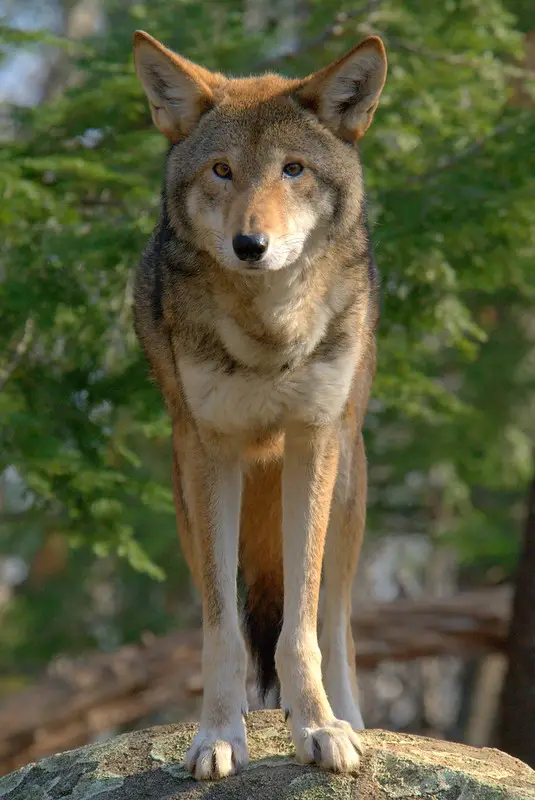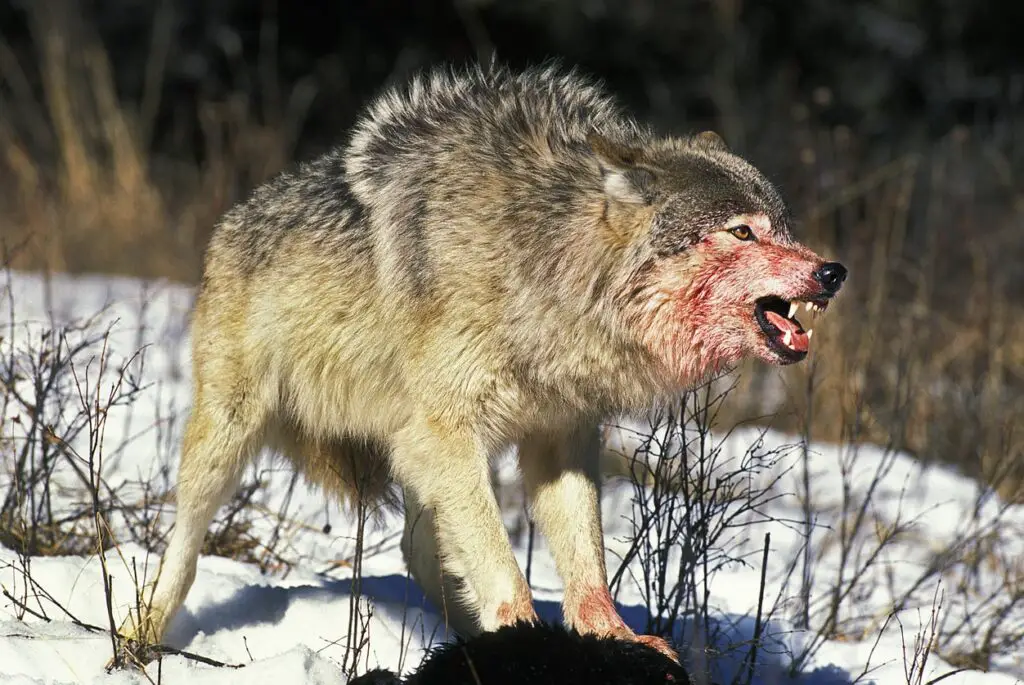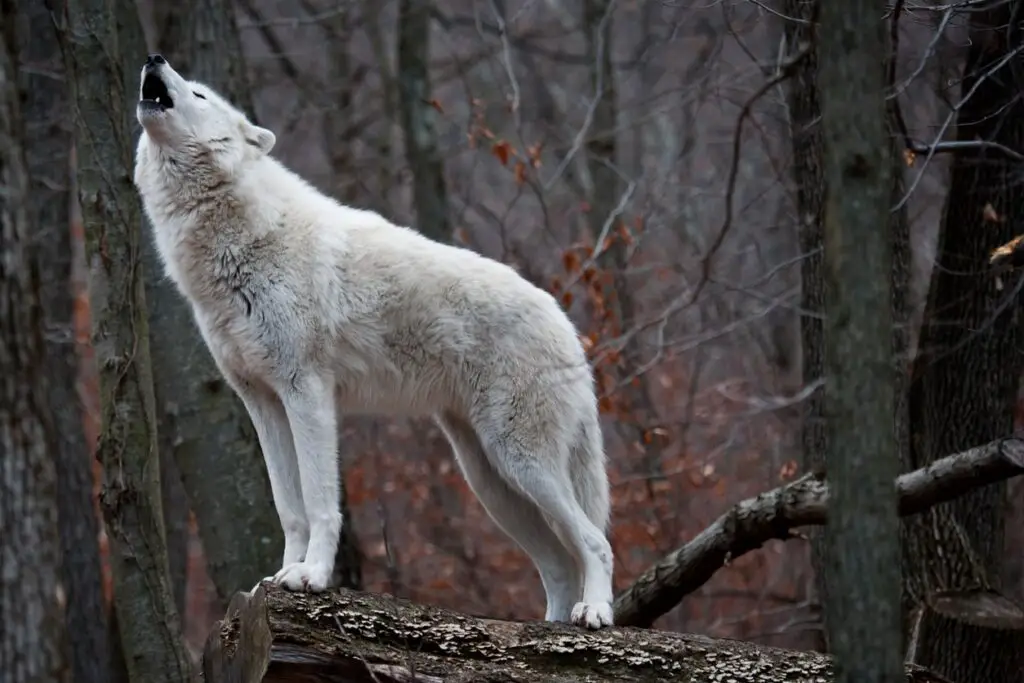How big are wolves?
The wolf is renowned in the animal kingdom for its cunning, social habits, and formidable build. However, it’s worth understanding how large these creatures are since it has many implications: from their role as apex predators to potential effects on humans and livestock to their historic symbolic presence.
In this article, we’ll look at the physical attributes of wolves in detail, analyze comparisons with other canids; ultimately discern what influence size holds when it comes to behavior and ecology surrounding them.

How big are wolves: Physical characteristics.
Adult wolves typically range in size from 4 to 6 feet in length and weigh between 50 and 120 pounds. However, there is considerable variation in size among different wolf subspecies. For example, the gray wolf, the largest subspecies, can reach 6.6 feet in length and weigh as much as 175 pounds. By contrast, the red wolf and Ethiopian wolf are smaller, ranging from 4 to 5.5 feet and weighing around 50 to 80 pounds.
Wolves can vary in size due to heredity, diet, and environment. Those with abundant food sources and hospitable climate conditions are typically larger than those inhabiting areas with fewer resources. Additionally, wolves whose genes predispose them to increased stature will more likely achieve greater length as adults.

How big are wolves compared to other canids.
Wolves are the largest Canidae family members, including dogs, foxes, and jackals. Wolves are generally larger and more robustly built compared to other wild dog species. For example, the African wild dog, also known as the painted wolf, is smaller than the gray wolf, with an average weight of around 50 to 70 pounds. Foxes and jackals are even smaller, weighing just a few pounds.
In terms of size, domestic dogs can vary quite drastically – from the diminutive toy poodles that tip the scale at mere pounds to gargantuan Great Danes reaching up to a hundred. Despite their sizing disparity, even fully grown domesticated canine breeds are usually much smaller than adult wolves.

Role of Size in Wolf Behavior and Ecology.
Size plays an important role in wolf behavior and ecology. Larger wolves are generally more successful at hunting and killing larger prey, such as moose and deer, while smaller wolves may focus on smaller prey, like rabbits and rodents.
In addition, size can affect a wolf’s social hierarchy and mating prospects. Bigger wolves, particularly males, are more likely to dominate their pack and secure breeding rights.
Size can also impact a wolf’s habitat and range. For example, wolves that live in colder climates, such as those in the Arctic, tend to be larger to withstand freezing temperatures better. Similarly, wolves that inhabit areas with larger prey may be larger to take advantage of these food sources.
History’s top ten biggest wolves.
Determining the biggest wolves ever recorded is arduous due to a lack of accurate records or research. Nonetheless, here are ten noted largest canines that have been reported:
- The largest wolf on record was a male killed in Drayton Valley, Alberta, Canada, in 1939. It was reported to have weighed 175 pounds and measured 6.6 feet in length.
- In 1960, a wolf in Kluane National Park in the Yukon Territory of Canada was shot and reportedly weighed around 150 pounds.
- A wolf killed in Alaska in 1963 was reported to have weighed 140 pounds.
- A wolf killed in the Nelchina Basin of Alaska in 1960 was estimated to weigh between 130 and 145 pounds.
- A wolf shot in Chignik, Alaska, in 1960 was reportedly 135 pounds.
- A wolf killed in the Tatshenshini River area of British Columbia, Canada, in the 1950s was estimated to weigh around 130 pounds.
- A wolf shot in the Denali National Park in Alaska in the 1960s was estimated to weigh 125 pounds.
- A wolf killed in the Kenai Peninsula of Alaska in 1960 was reported to weigh 120 pounds.
- A wolf killed in the Nelchina Basin of Alaska in the 1950s was estimated to weigh 115 pounds.
- A wolf killed in the Chugach National Forest in Alaska in the 1960s was estimated to weigh 110 pounds.
It is essential to recognize that the accuracy of these measurements may be shaky, as they were collected from personal accounts instead of scientific studies. Furthermore, due to variables such as genetics, diet, and habitat, the size of wolves can range greatly; thus, it could be possible that there have been larger or smaller wolves than what has already been documented in records.
In summary, wolves have varied sizes depending on genetics, diet, and habitat; they are generally larger than wild dogs or domestic pets. Their size significantly influences their hunting style, social behavior, environment, and range of movement. Consequently, it is worthwhile to comprehend the size of wolves to understand better their ecological role in our world and any consequences it may have upon other species – including humans.

